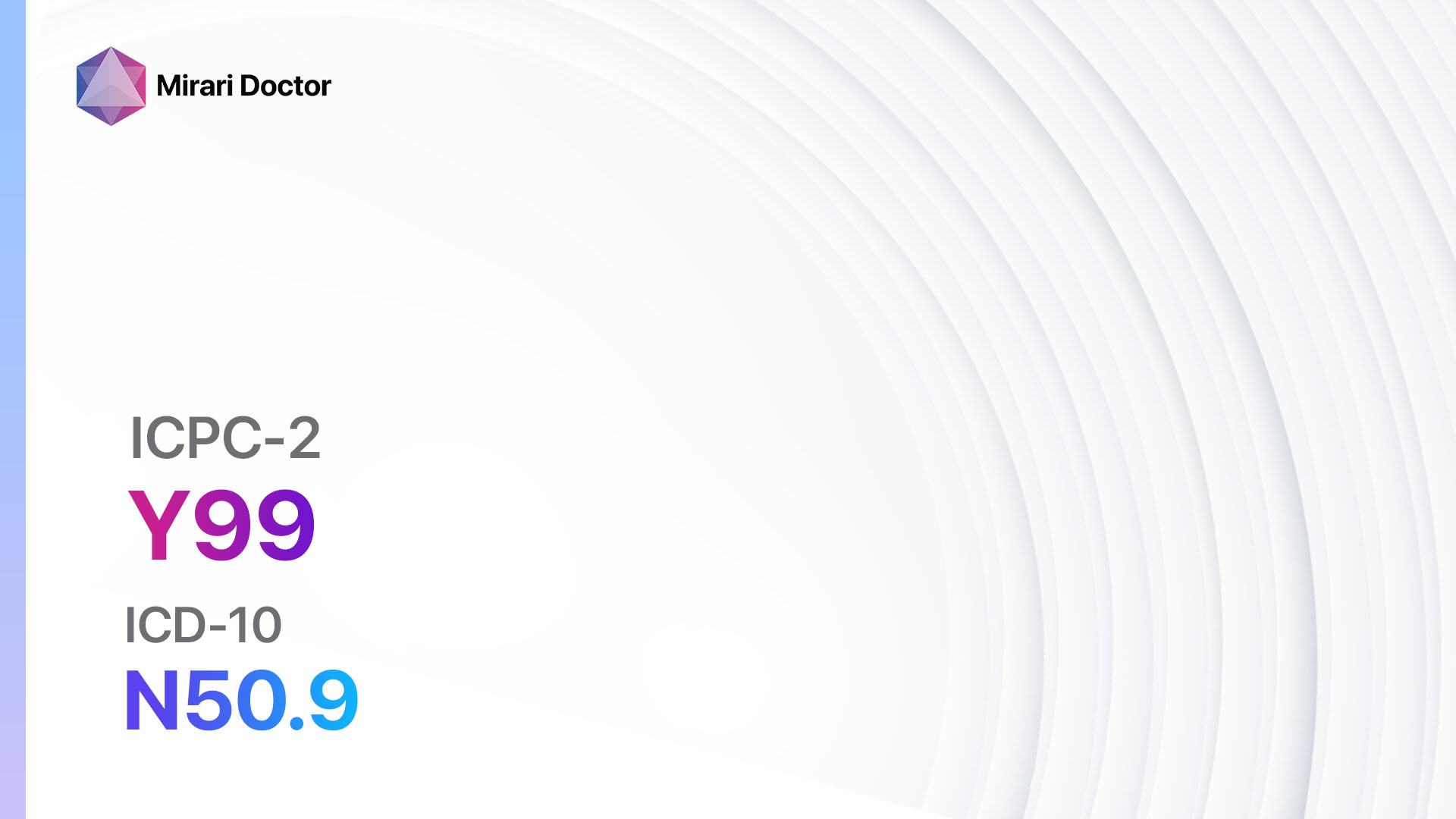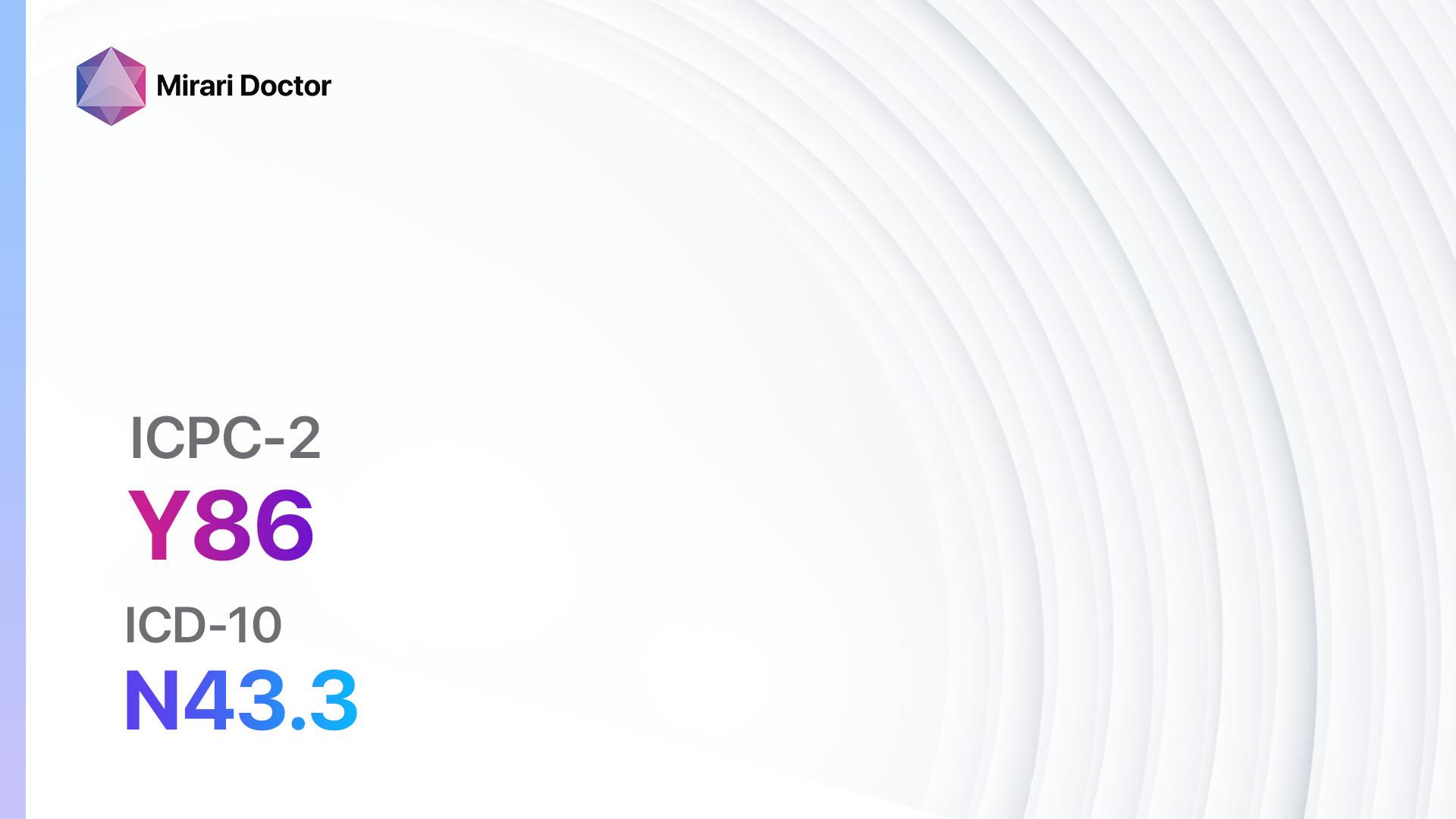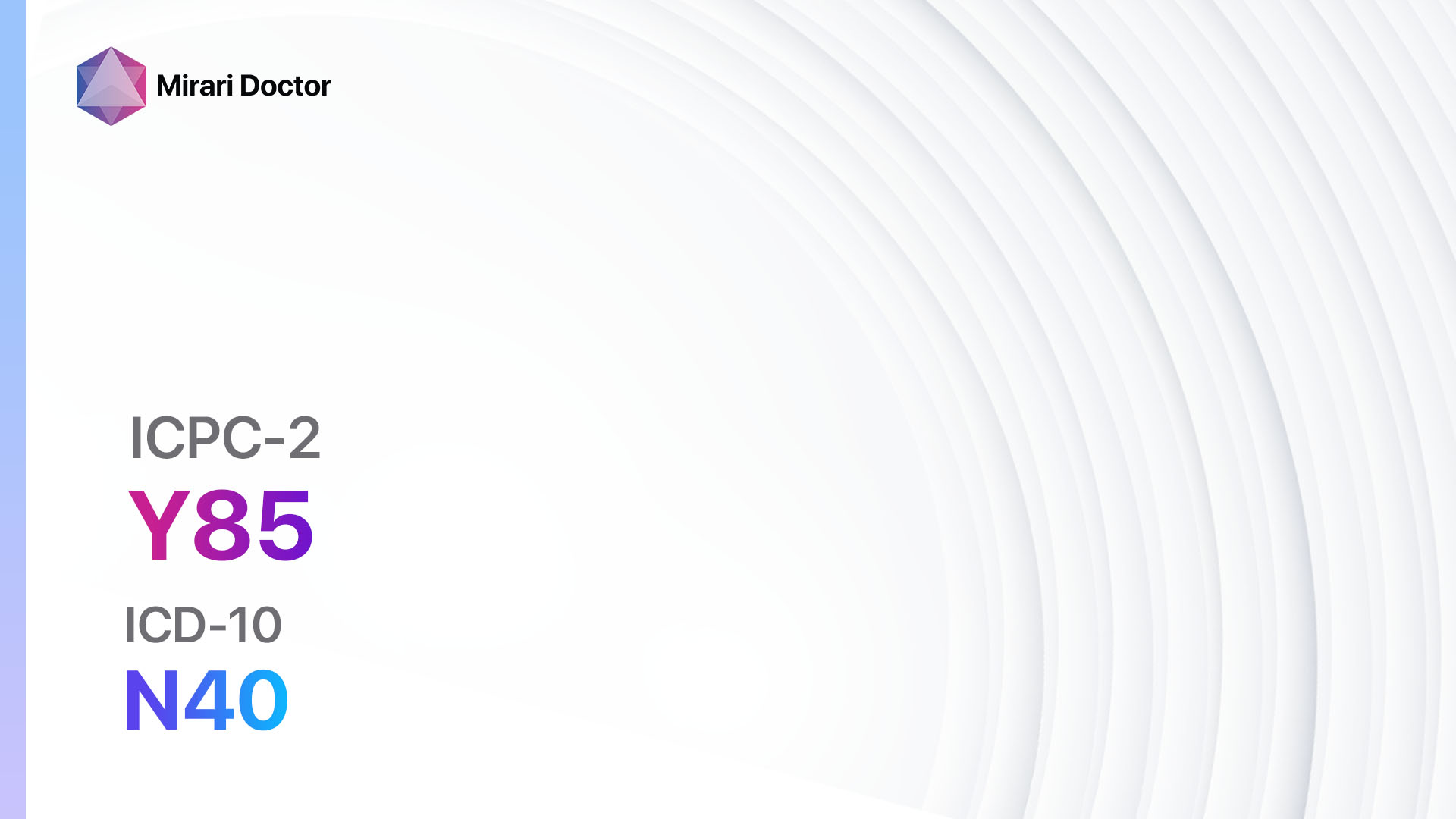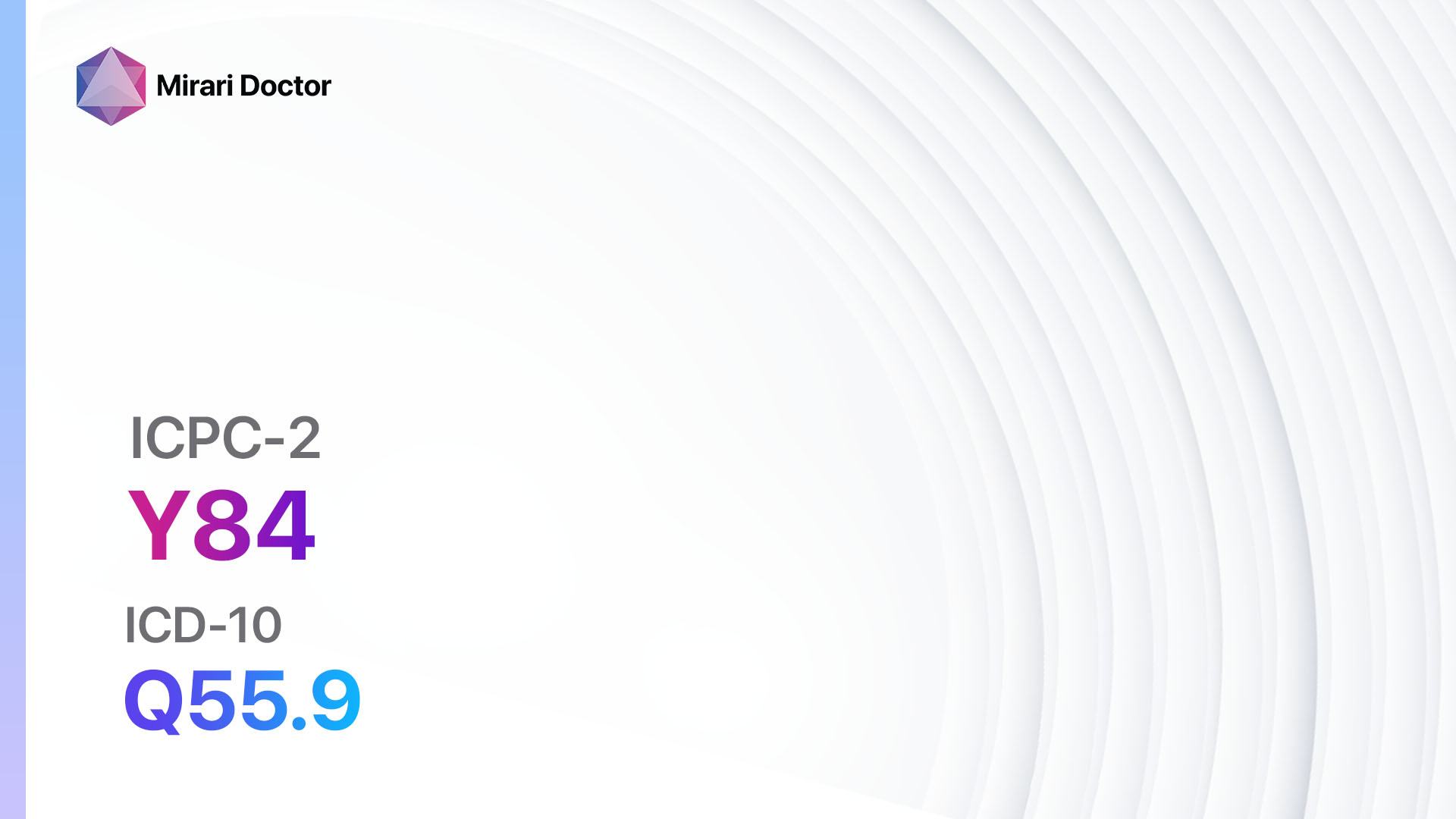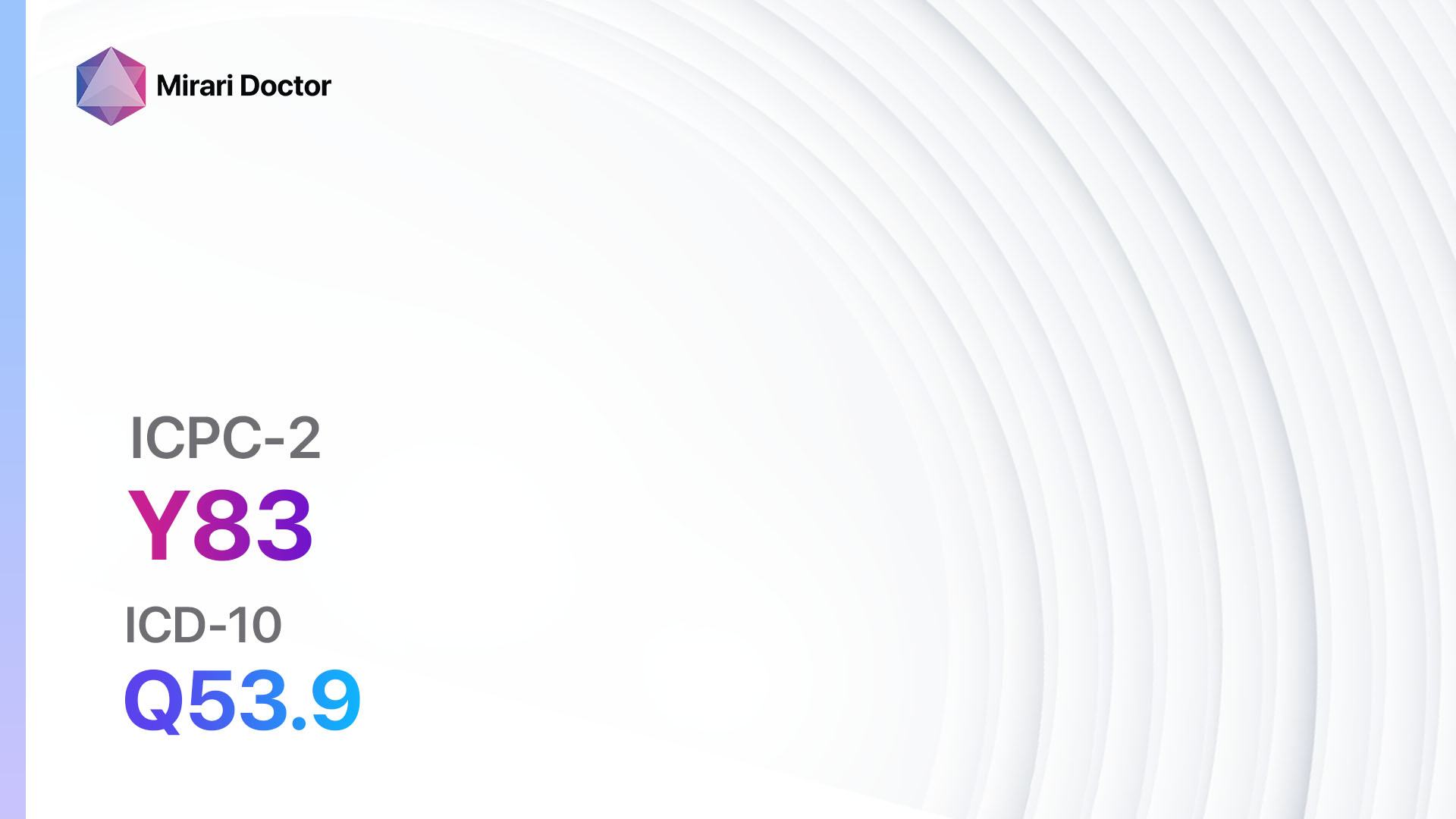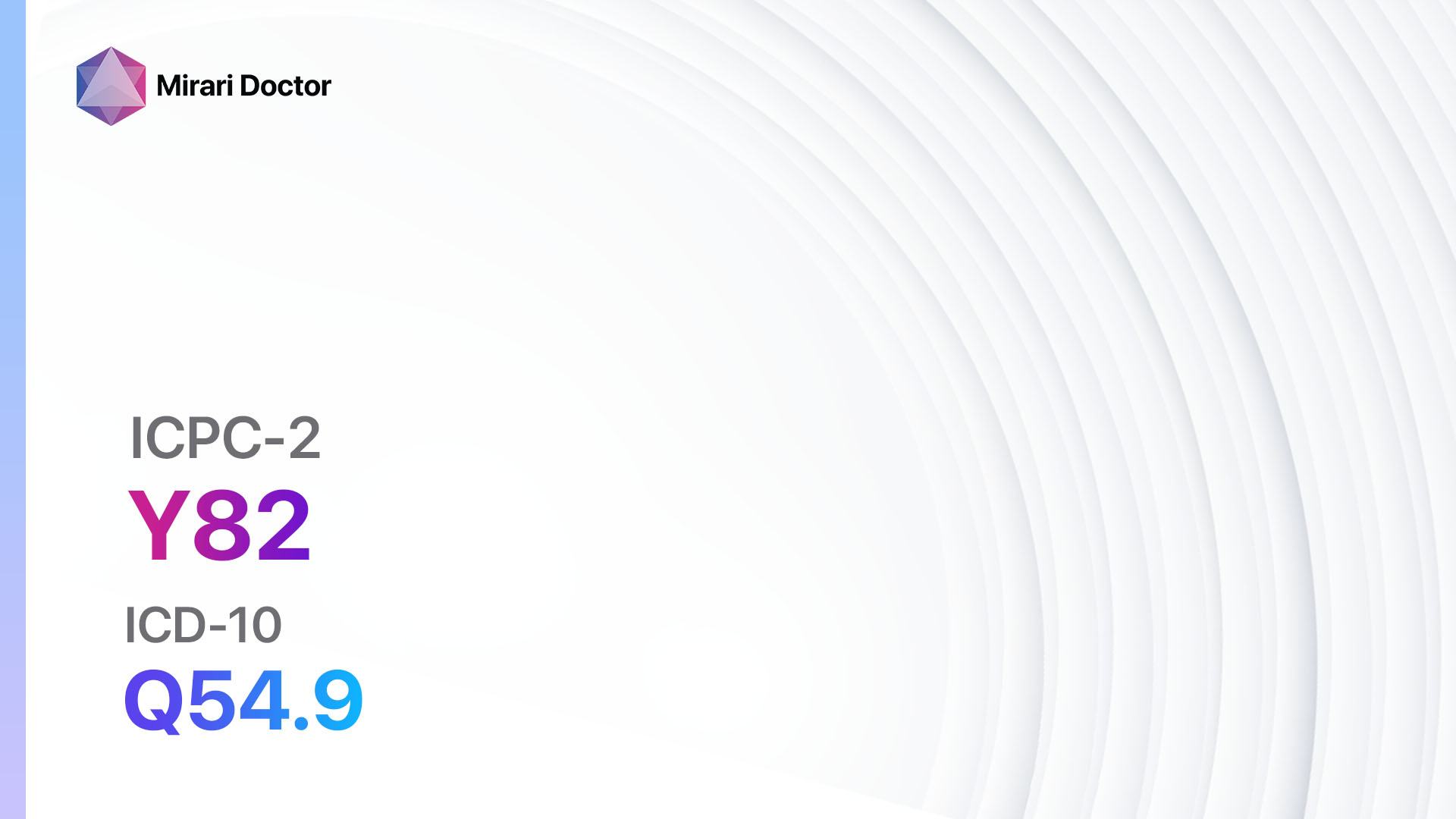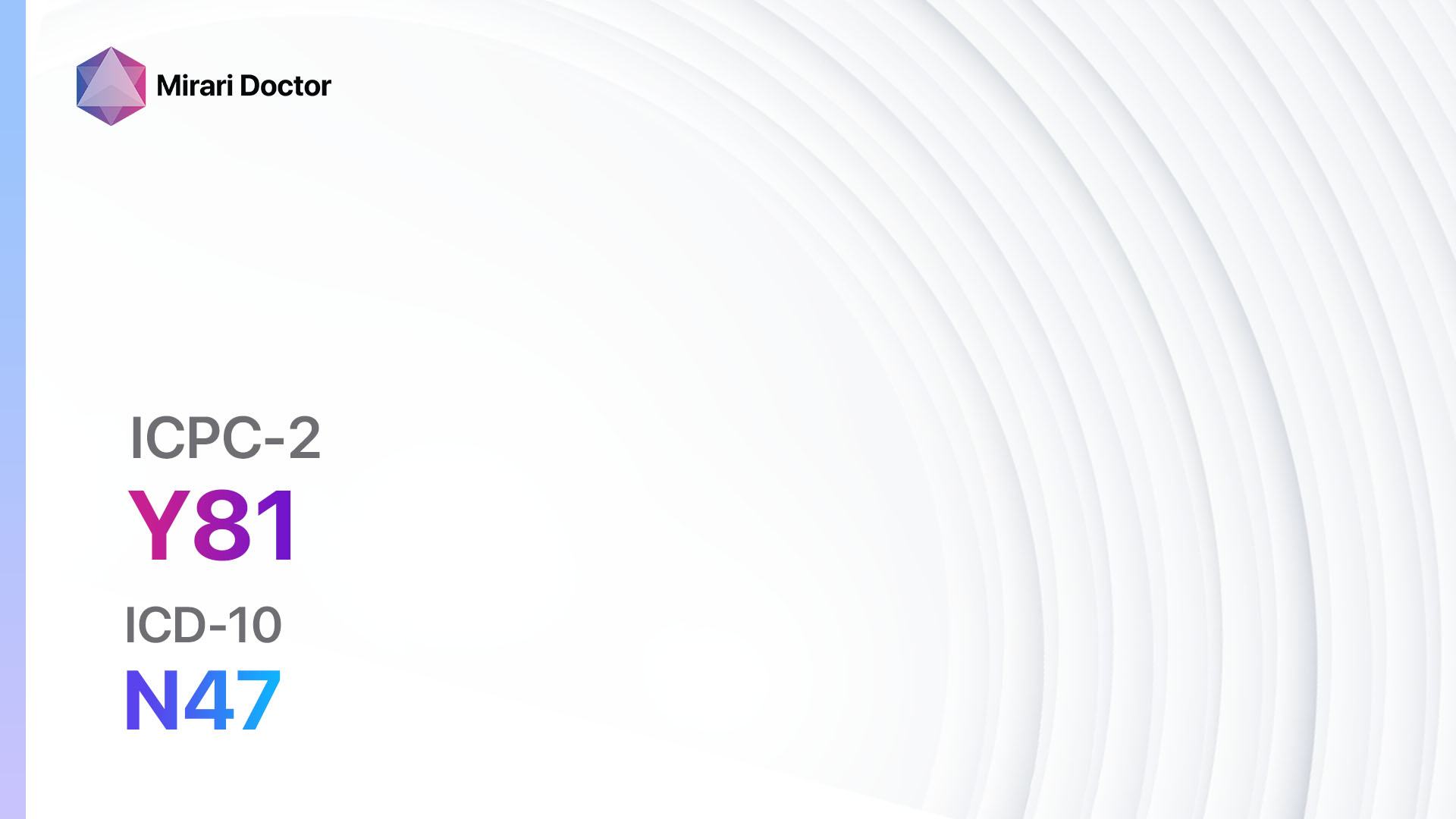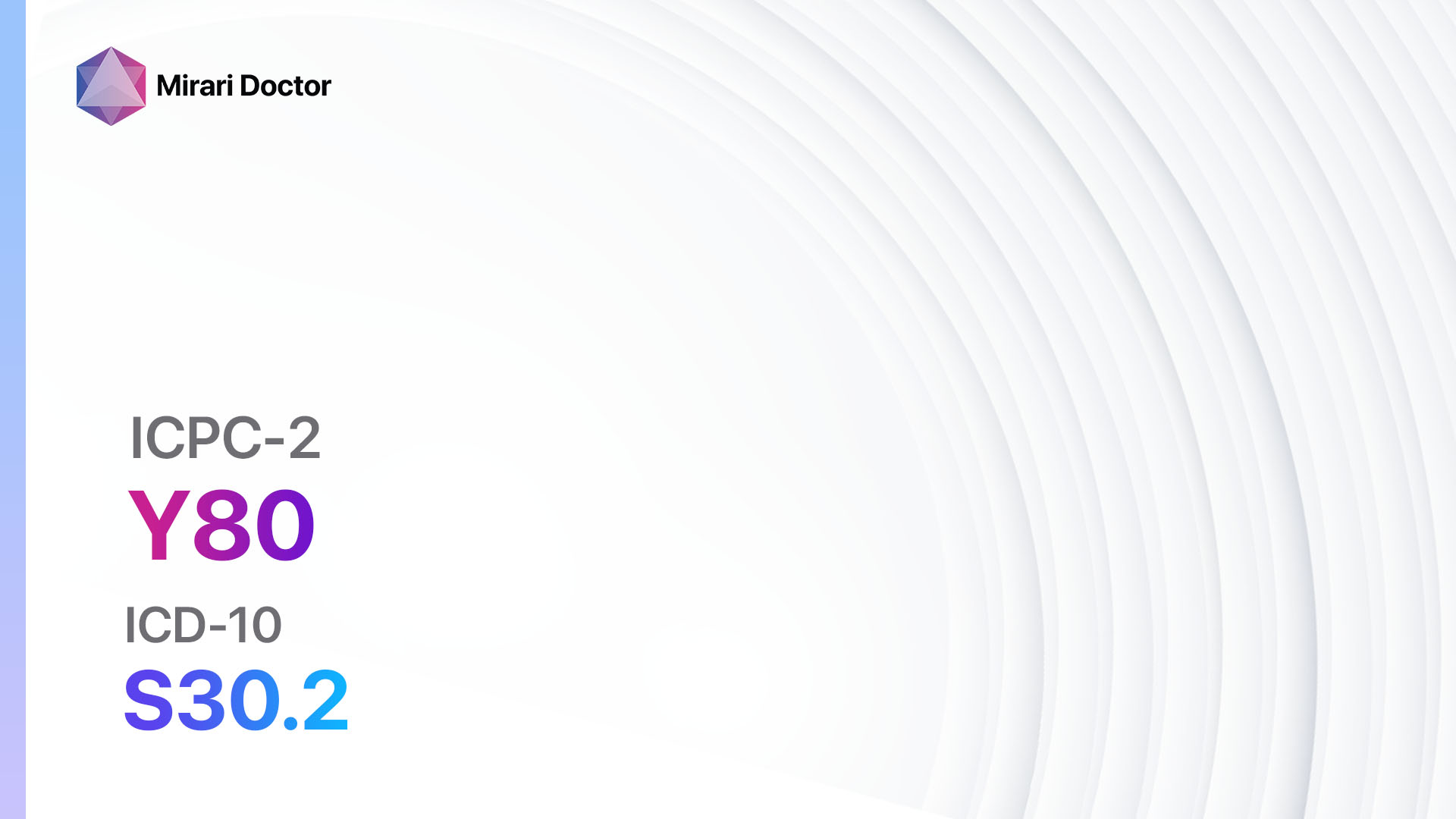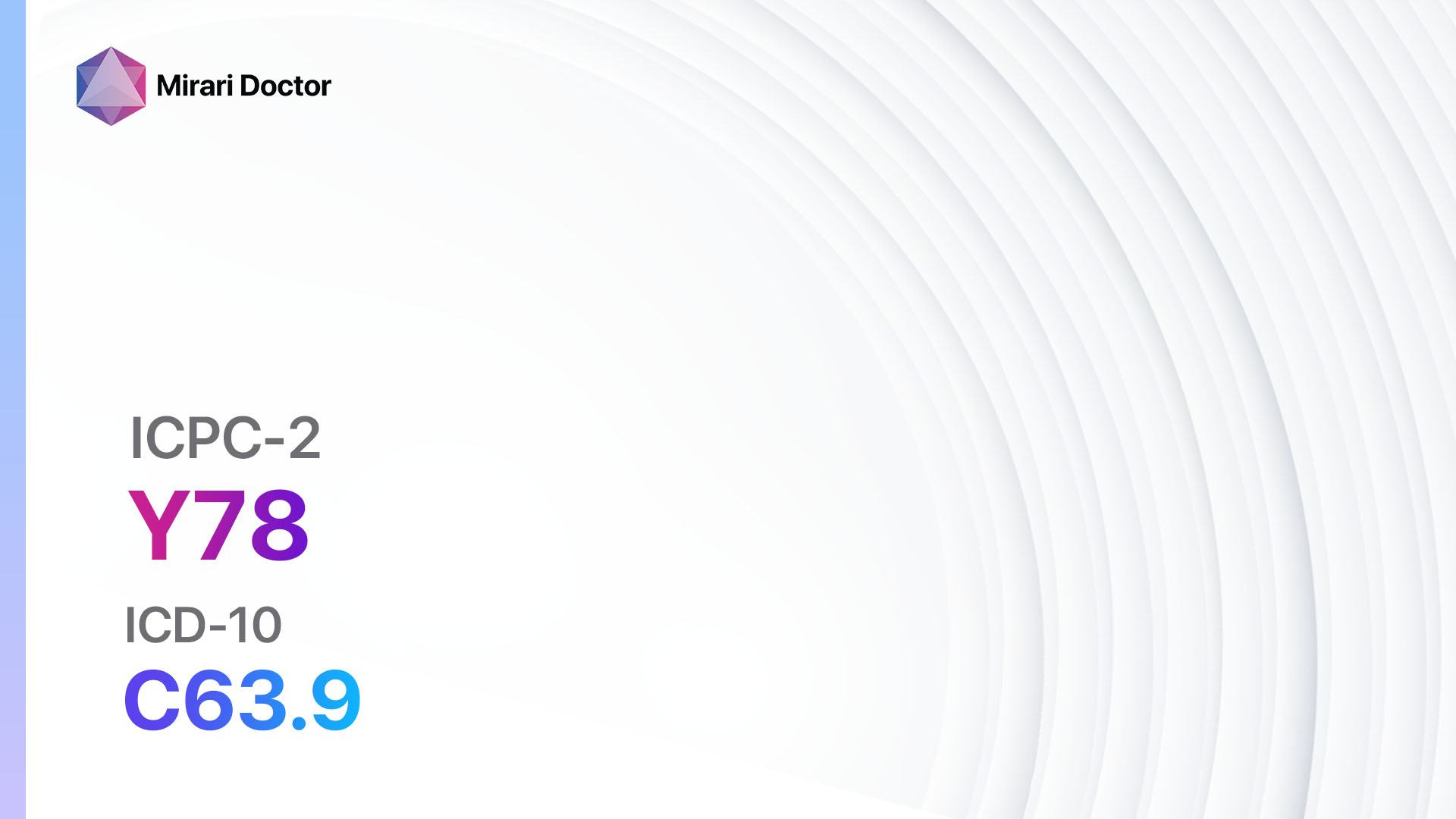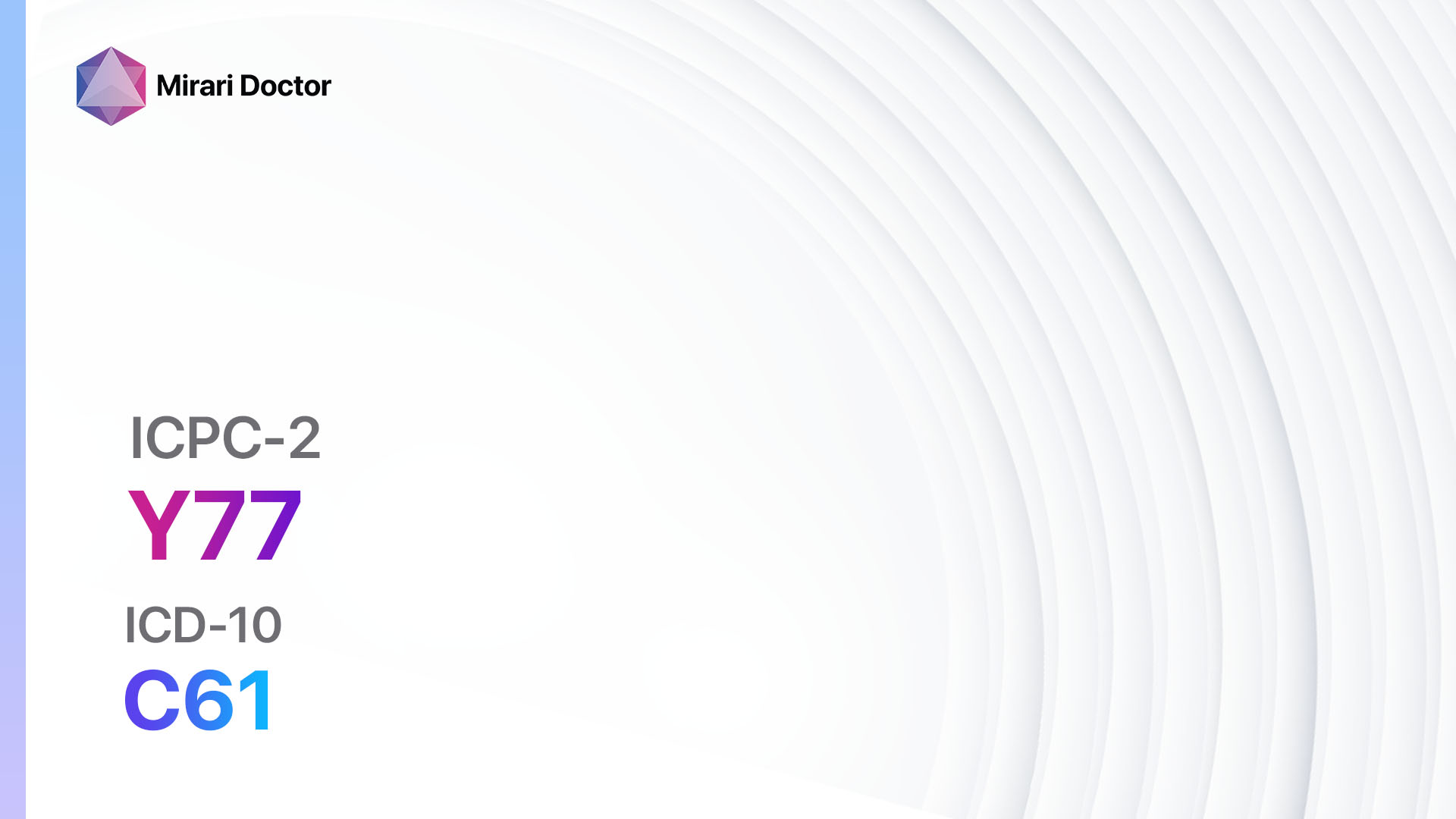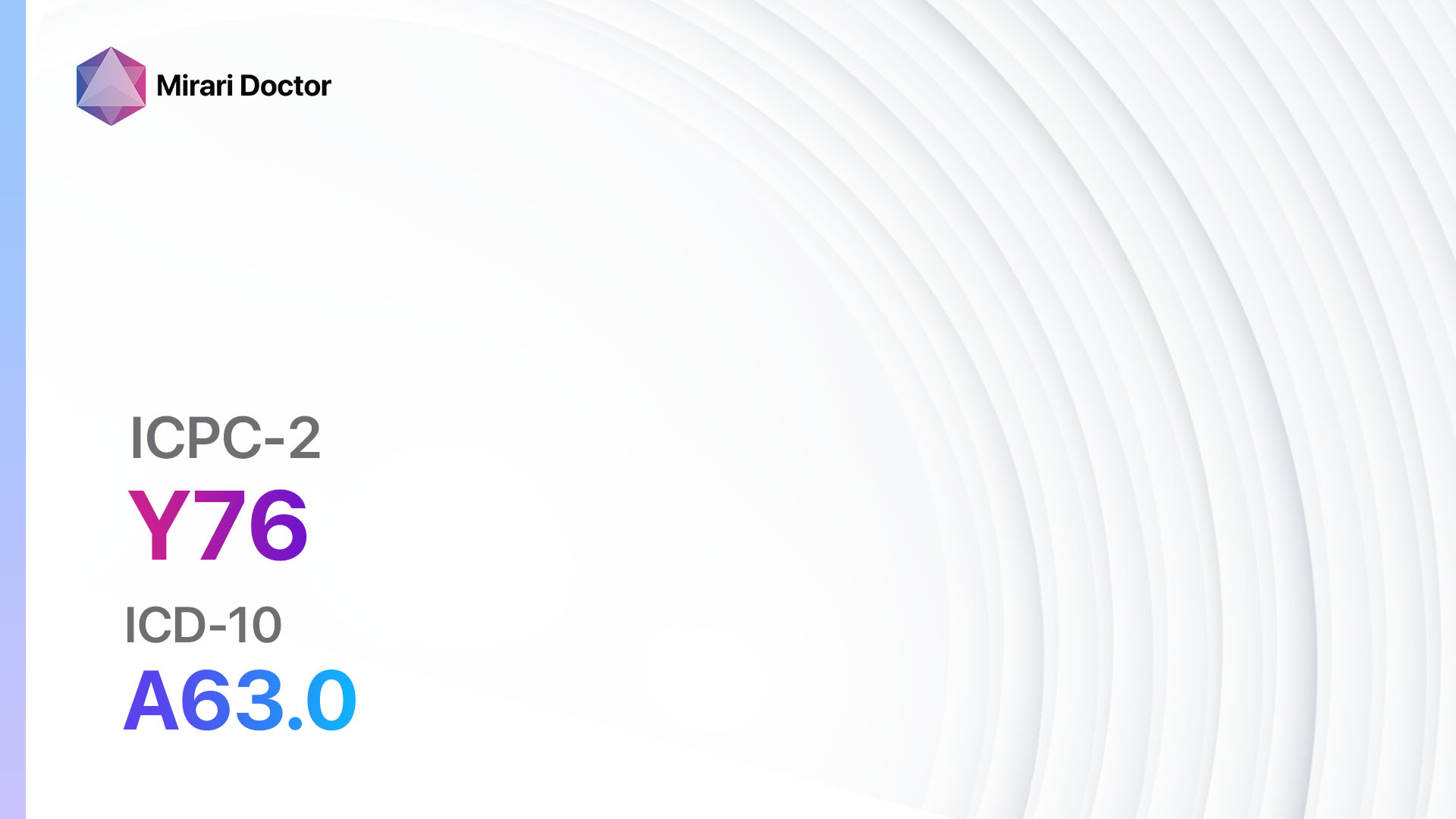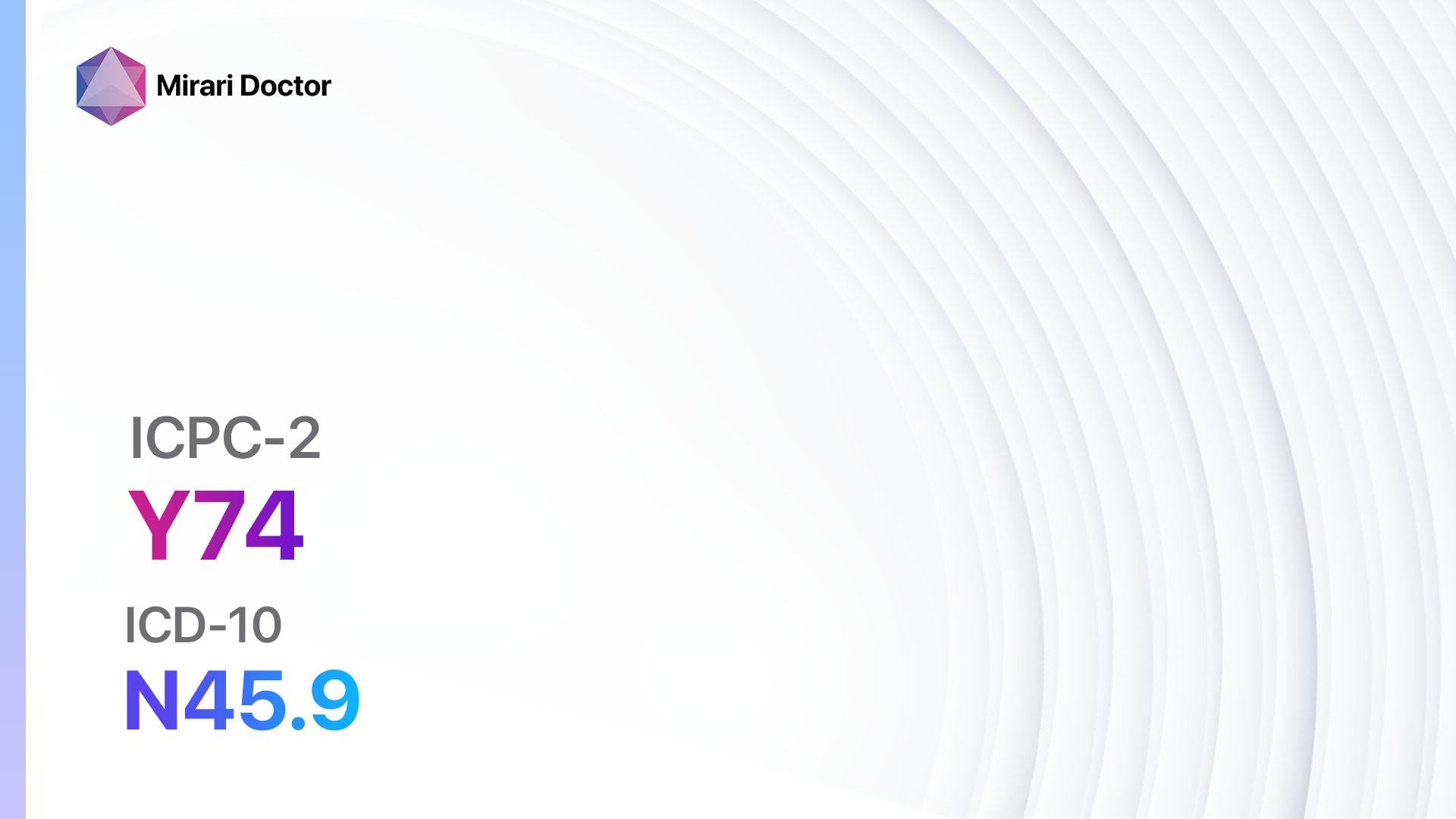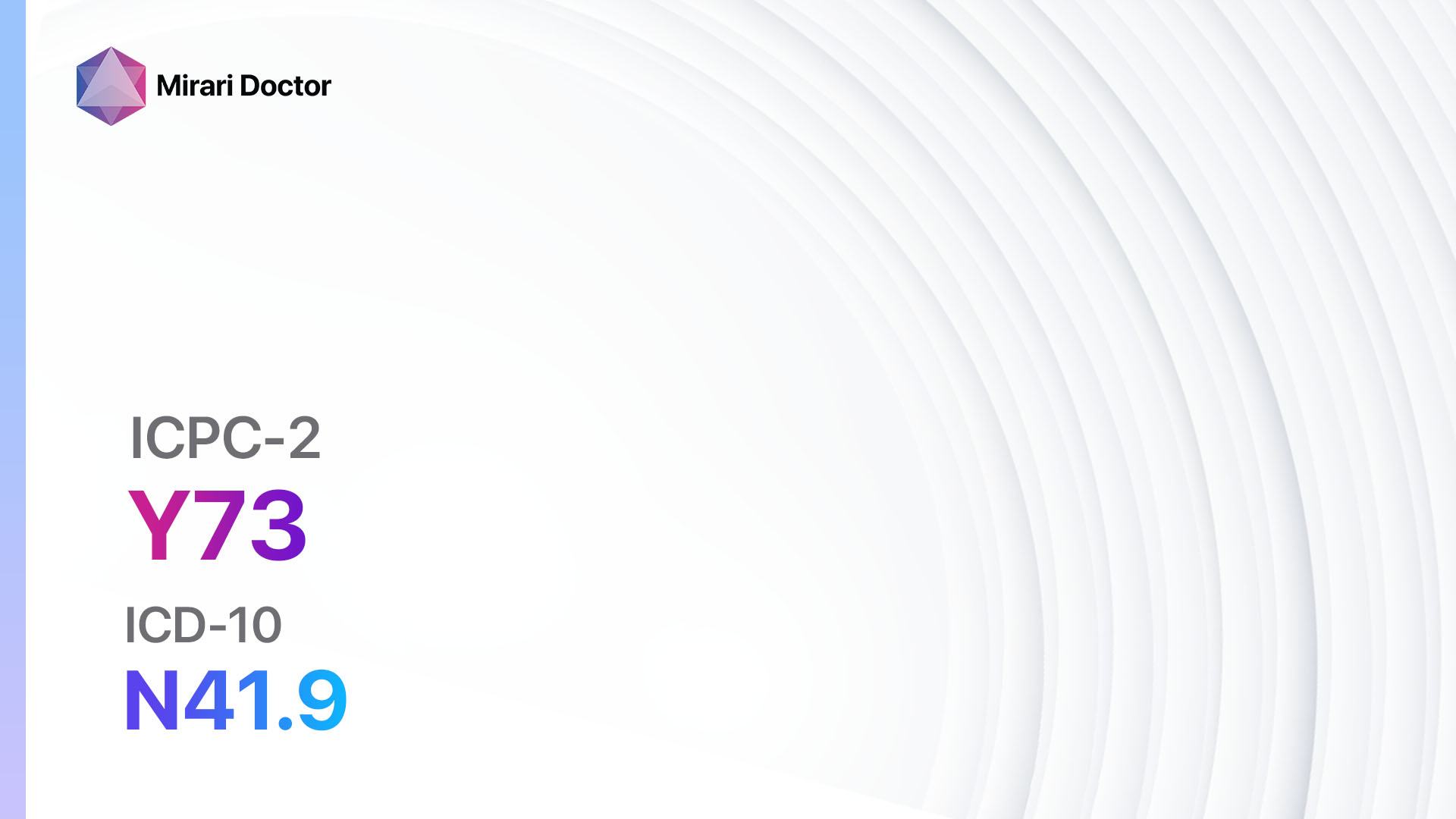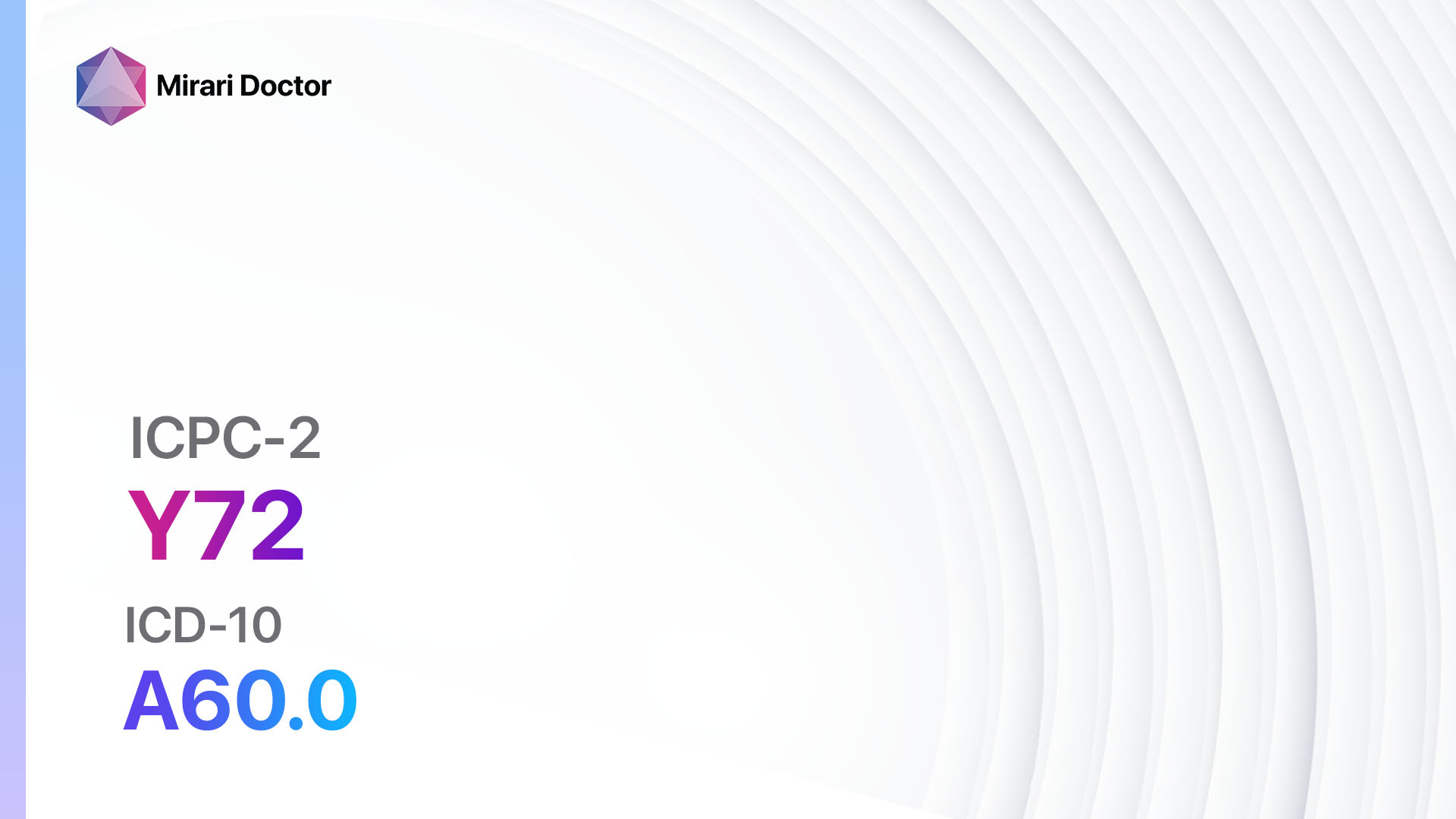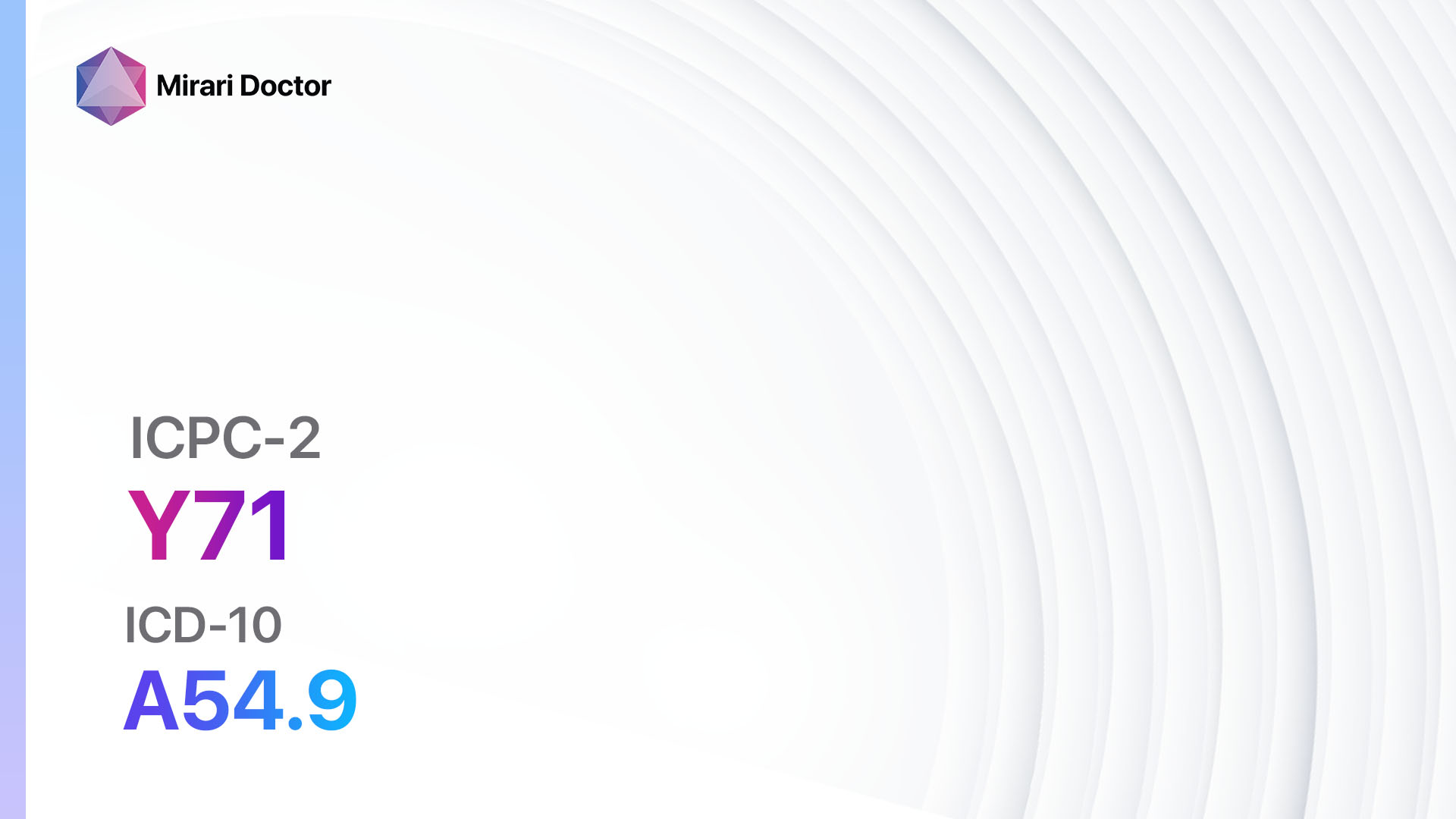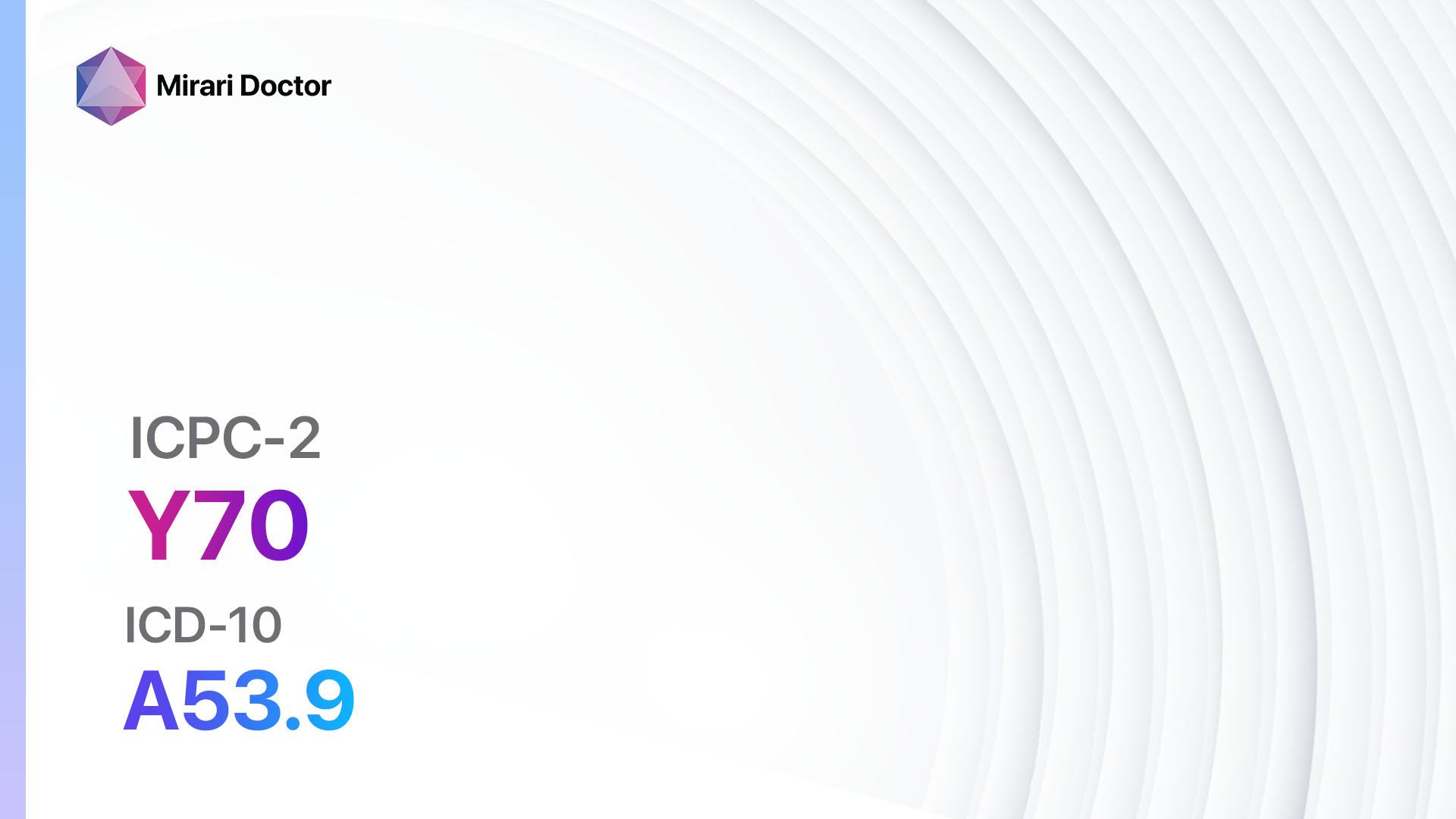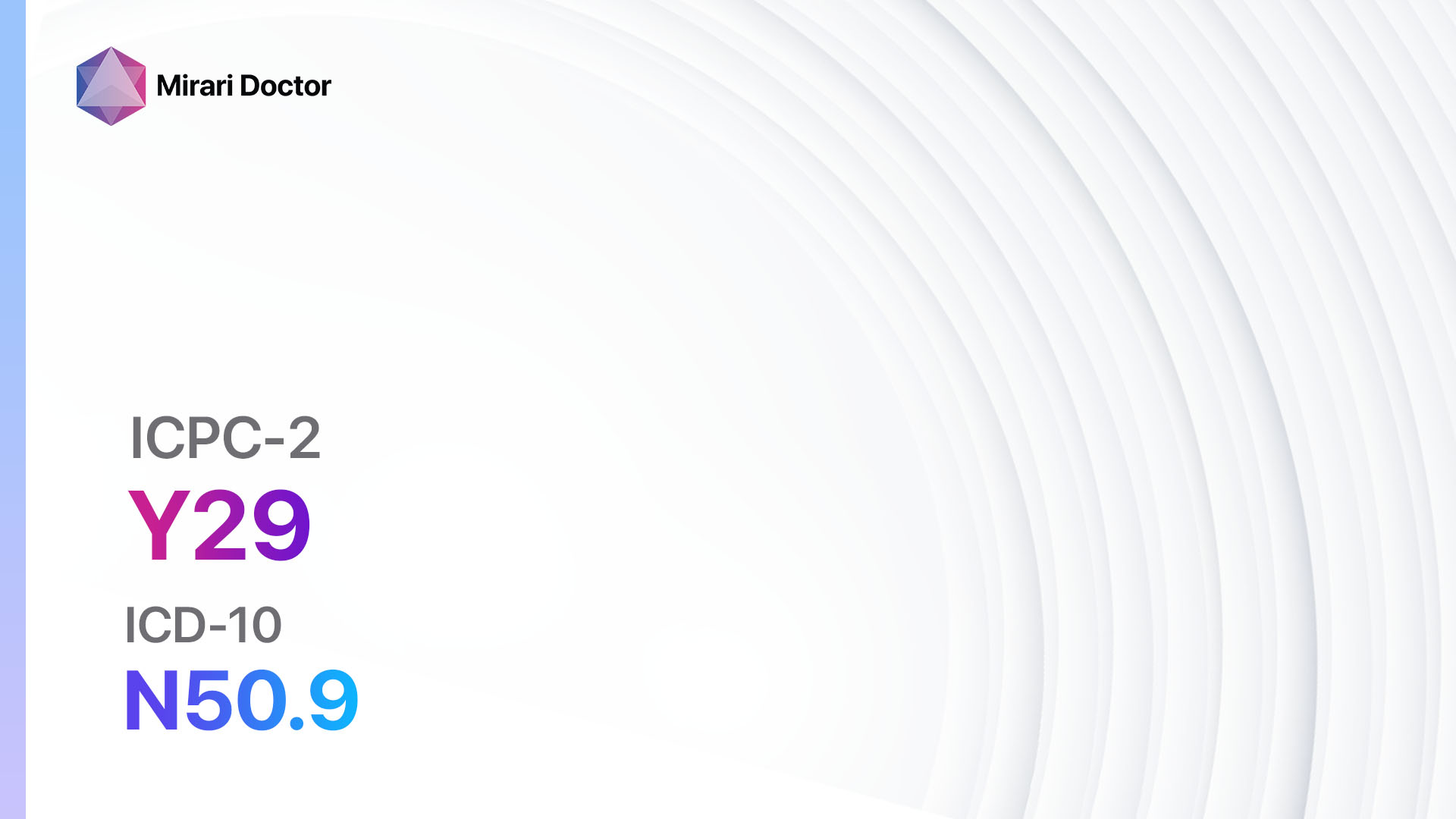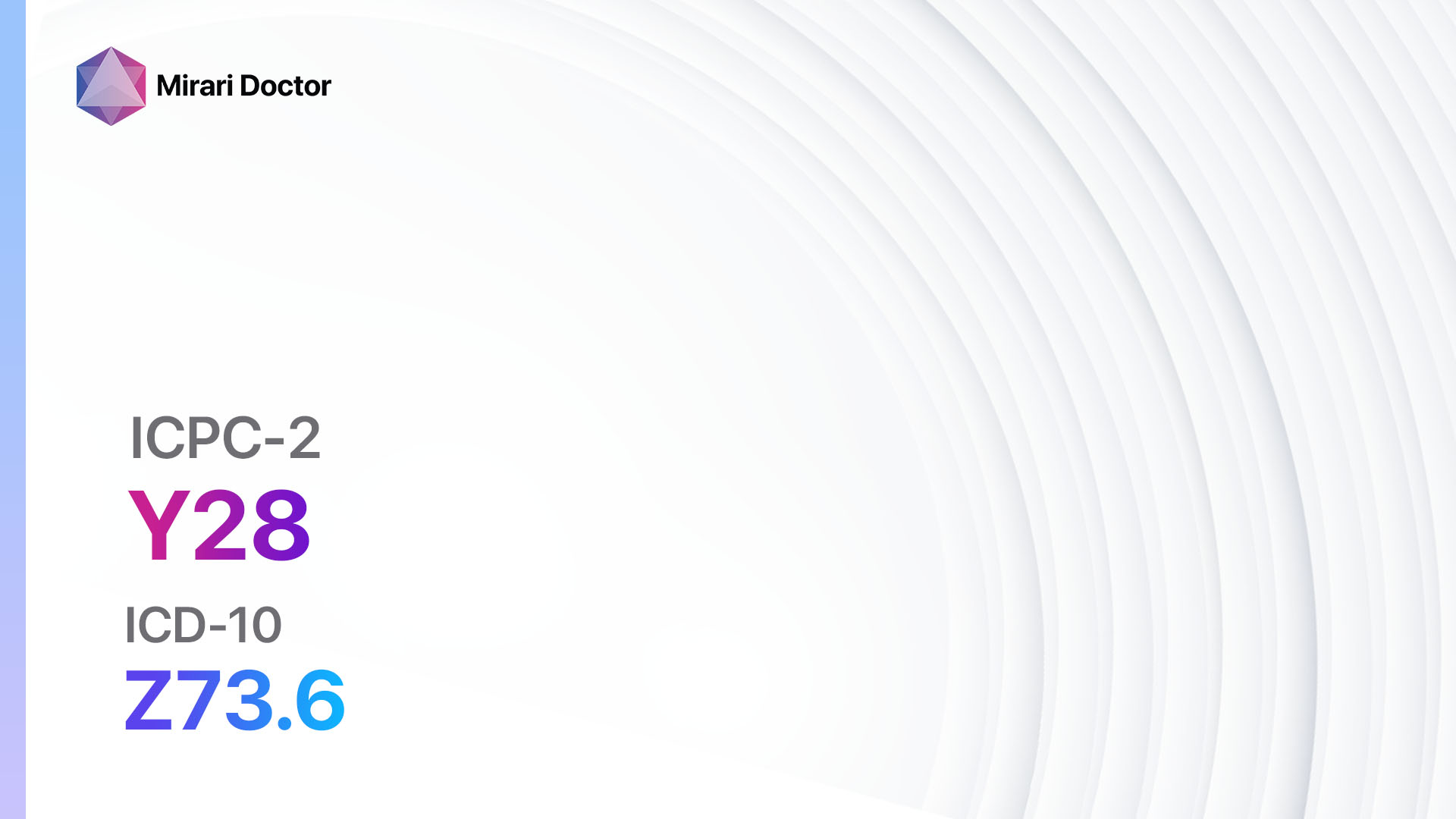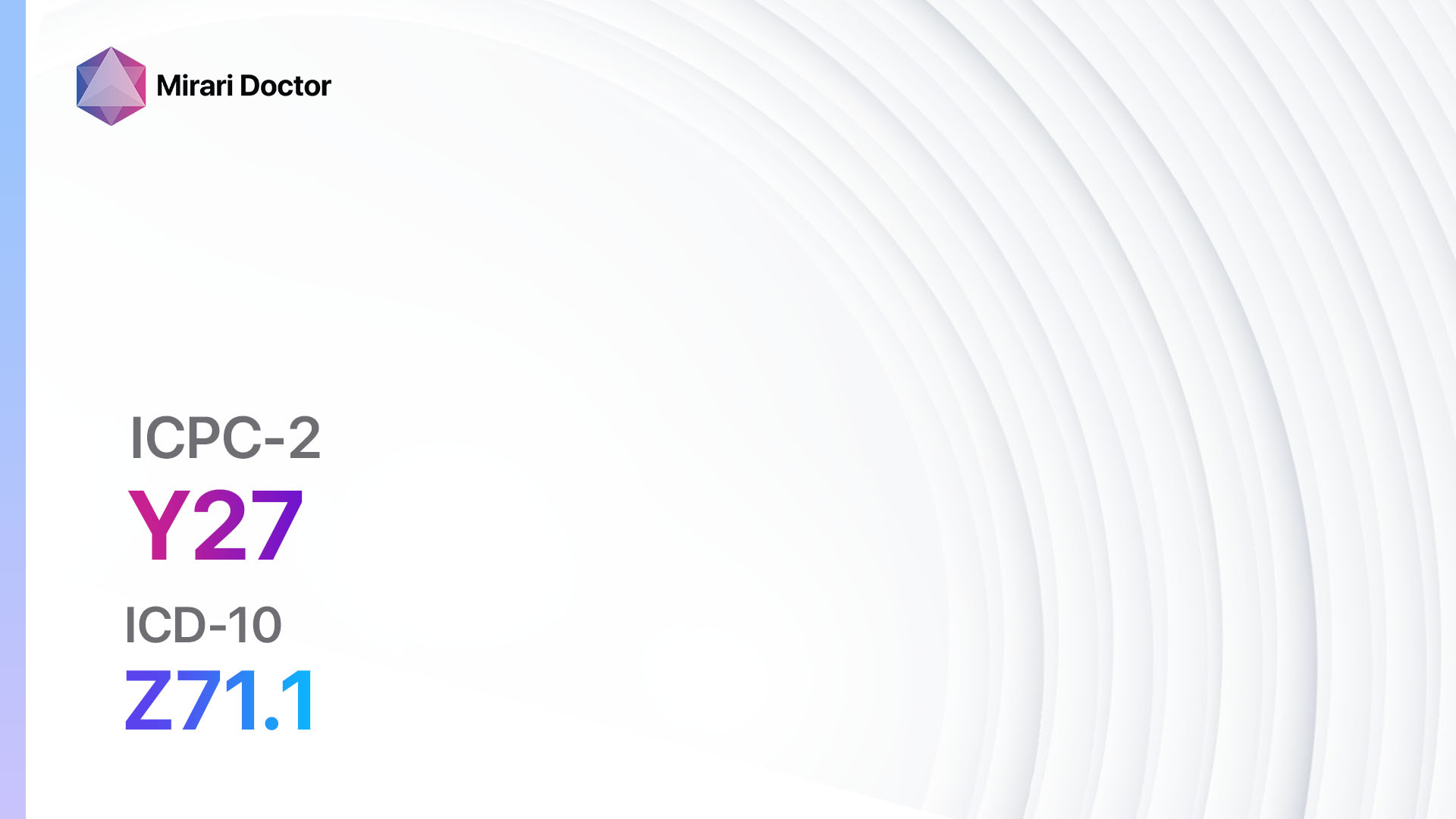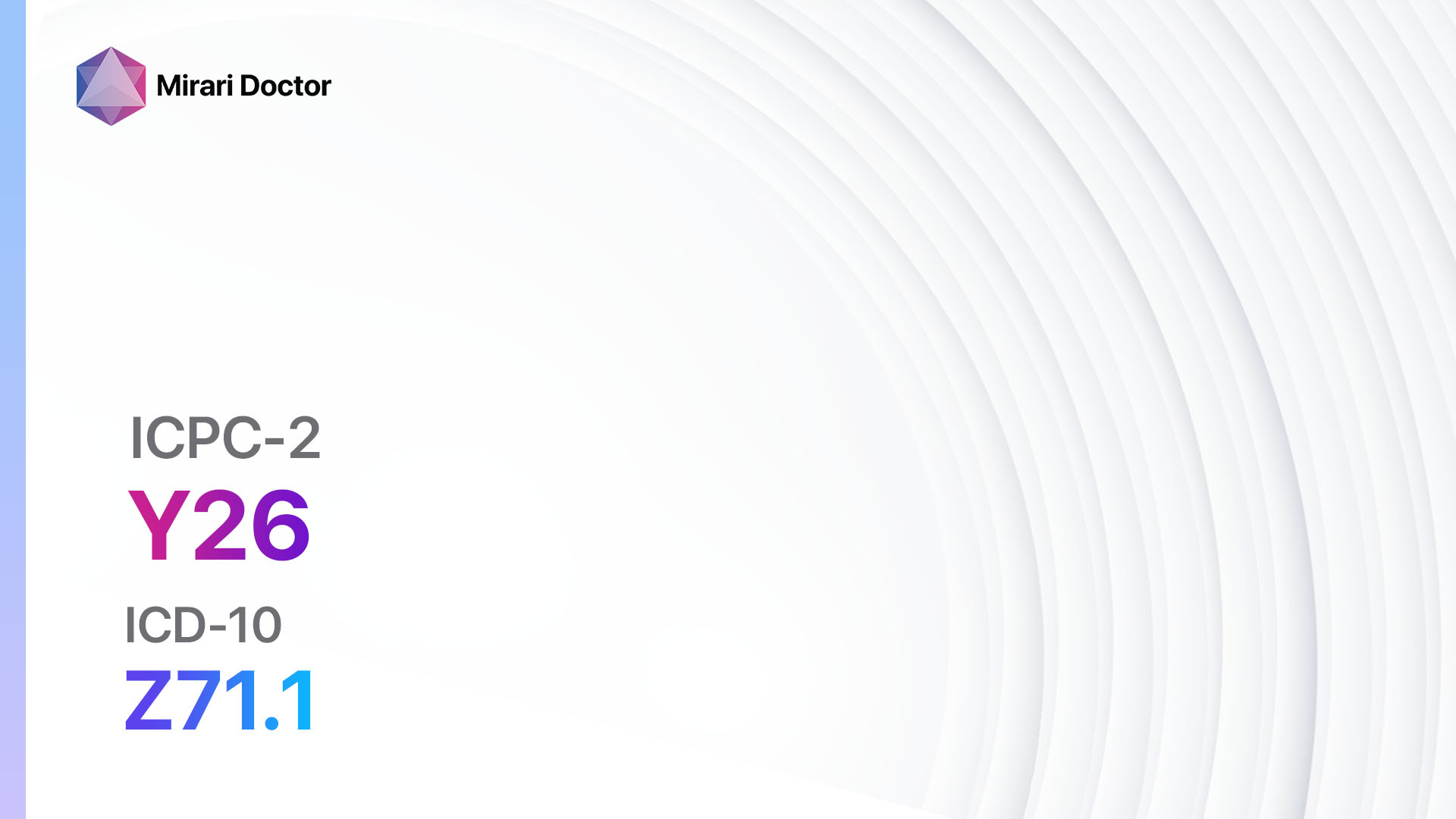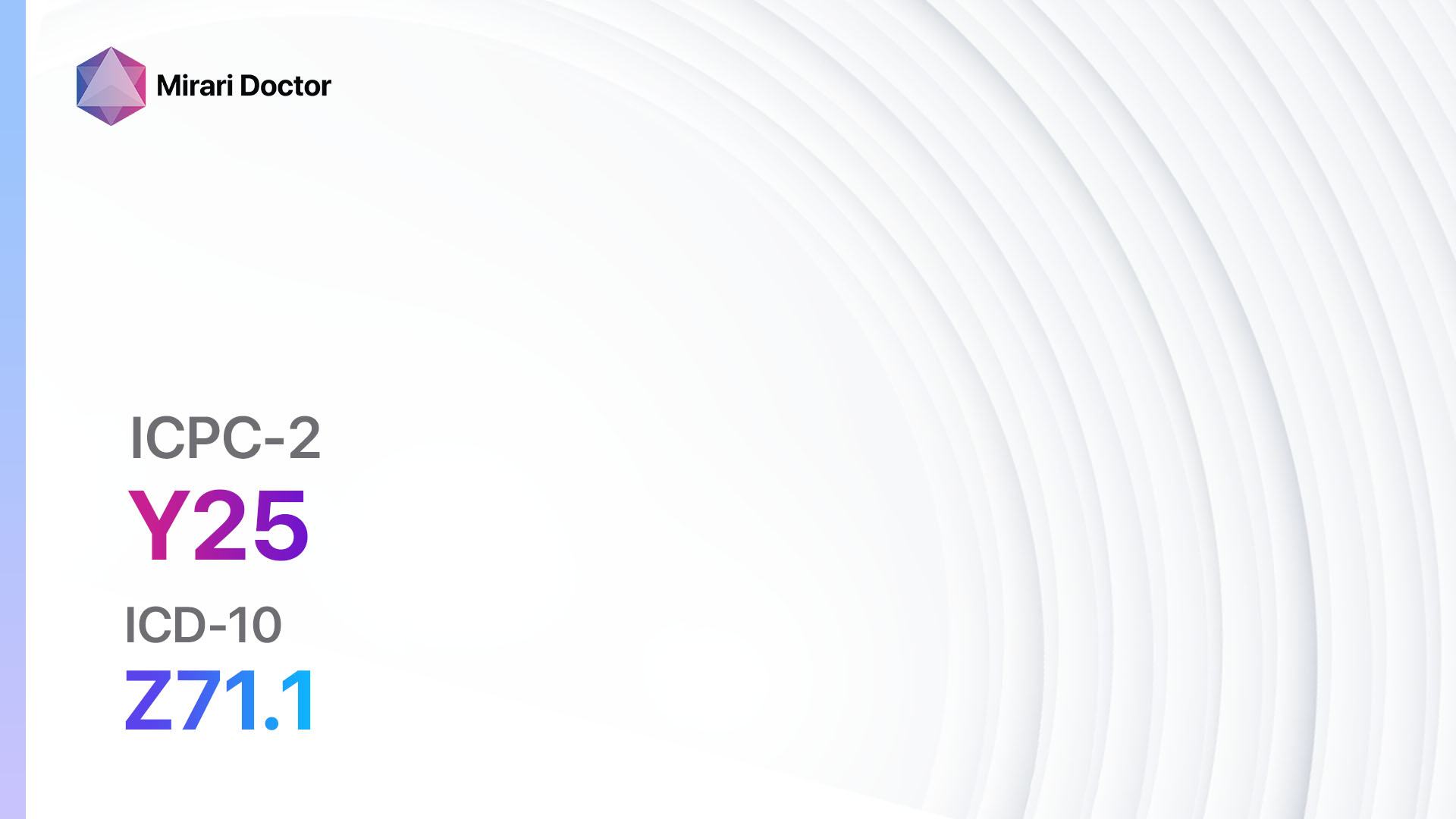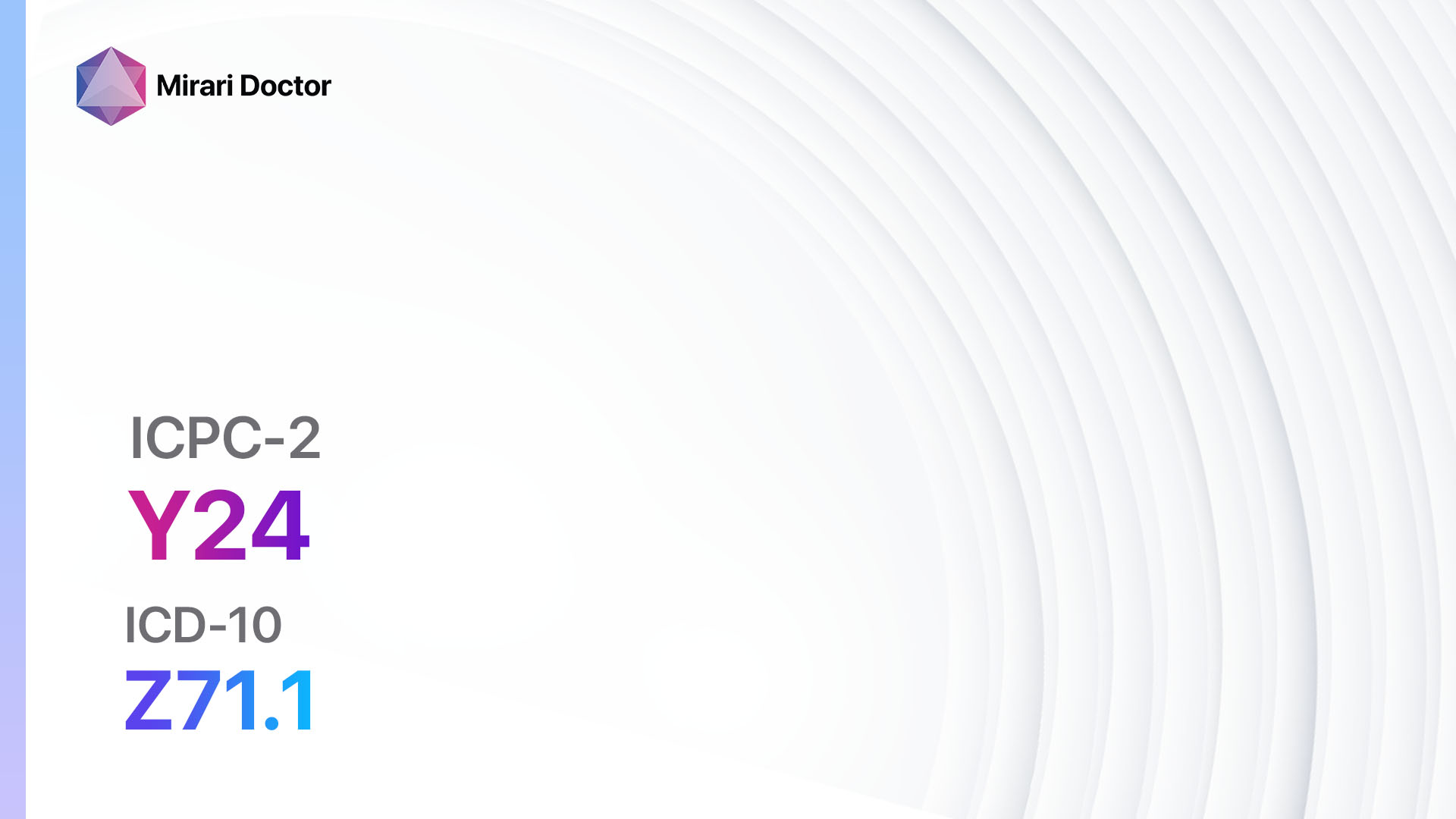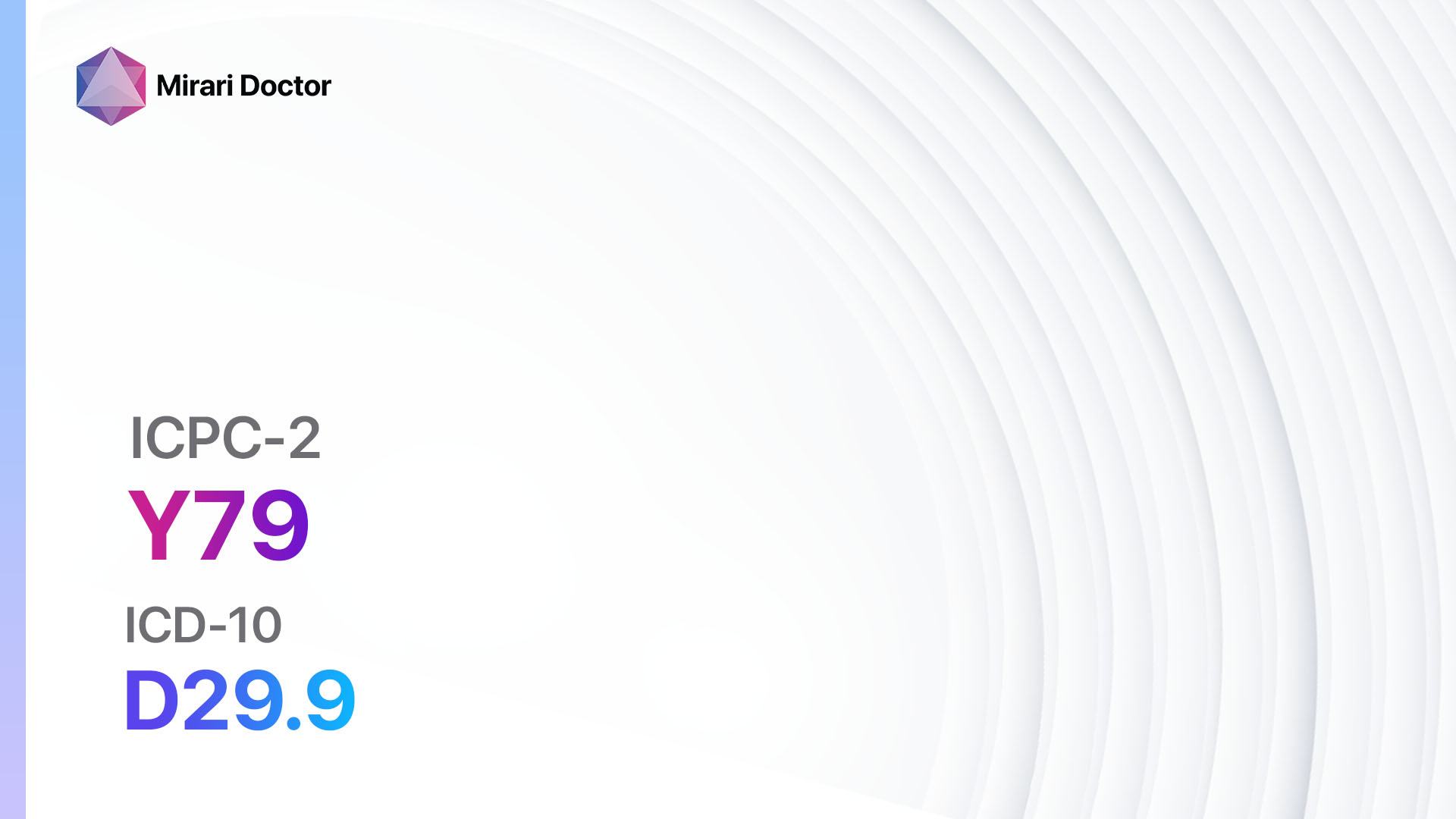
Introduction
Benign/unspecified neoplasm gen. (m) is a condition characterized by the presence of non-cancerous growths or tumors in the body. These neoplasms are usually localized and do not spread to other parts of the body[1]. The aim of this guide is to provide a comprehensive overview of the diagnostic and treatment options for this condition.
Codes
- ICPC-2 Code: Y79 Benign/unspec. neoplasm male genital
- ICD-10 Code: D29.9 Benign neoplasm of male genital organ, unspecified[2]
Symptoms
- Pain or discomfort in the affected area
- Swelling or lump in the affected area
- Changes in bowel or bladder habits
- Unexplained weight loss
- Fatigue or weakness
The symptoms of benign/unspecified neoplasm gen. (m) can vary depending on the location and size of the tumor. Some individuals may not experience any symptoms at all[3].
Causes
- Genetic factors
- Environmental factors
- Hormonal imbalances
- Chronic inflammation
The exact causes of benign/unspecified neoplasm gen. (m) are not fully understood. However, certain factors may increase the risk of developing these growths[4].
Diagnostic Steps
Medical History
Conduct a comprehensive medical history to gather relevant patient information, including risk factors, medical conditions, and symptoms related to the disease. Some key points to consider include:
- Family history of neoplasms or other related conditions
- Previous exposure to radiation or certain chemicals
- History of chronic inflammation or hormonal imbalances
- Any previous diagnoses of benign/unspecified neoplasms[5]
Physical Examination
Perform a thorough physical examination, focusing on specific signs or findings indicative of disease. Some aspects to consider during the physical examination include:
- Palpation of the affected area to identify any lumps or swelling
- Assessment of overall general health and well-being
- Examination of other body systems to rule out any additional signs or neoplasms[5]
Laboratory Tests
- Blood tests: Routine blood tests may be performed to assess overall health and rule out other potential causes of symptoms.
- Tumor markers: Specific blood tests may be ordered to measure the levels of certain substances that are typically elevated in the presence of neoplasms.
- Biopsy: A sample of the tumor tissue may be taken for laboratory analysis to confirm the diagnosis and determine the nature of the neoplasm[7].
Diagnostic Imaging
- X-rays: X-ray imaging may be used to visualize the neoplasm and assess its location and size.
- Ultrasound: Ultrasound imaging can provide detailed pictures of the neoplasm and surrounding structures.
- CT scan: CT scans may be ordered to obtain cross-sectional images of the neoplasm for better visualization and assessment.
- MRI: MRI scans can provide detailed images of the neoplasm and surrounding tissues, allowing for better characterization[8].
Other Tests
- Endoscopy: In some cases, an endoscope may be used to visualize the neoplasm and obtain tissue samples for further analysis.
- Genetic testing: Genetic testing may be recommended in certain cases to identify any specific genetic mutations associated with the development of neoplasms.
- Fine needle aspiration: A small needle may be used to extract a sample of the neoplasm for laboratory analysis[9].
Follow-up and Patient Education
After the diagnosis is confirmed, it is important to schedule regular follow-up appointments to monitor the neoplasm and assess its growth or any changes in symptoms. Patient education should also be provided to ensure understanding of the condition, its management, and the importance of regular monitoring[10].
Possible Interventions
Traditional Interventions
Medications:
Top 5 drugs for Benign/unspec. neoplasm gen. (m):
- Acetaminophen (e.g., Tylenol):
- Cost : $5-$15 for a 30-day supply.
- Contraindications : Allergy to acetaminophen.
- Side effects : Rare, but may include liver damage if taken in high doses.
- Severe side effects : Allergic reactions.
- Drug interactions: None of major concern.
- Warning : Do not exceed the recommended dosage.
- Nonsteroidal anti-inflammatory drugs (NSAIDs) (e.g., Ibuprofen, Naproxen):
- Cost : $5-$20 for a 30-day supply.
- Contraindications : History of gastrointestinal bleeding or ulcers, allergy to NSAIDs.
- Side effects : Upset stomach, heartburn.
- Severe side effects : Gastrointestinal bleeding, kidney problems.
- Drug interactions: Blood thinners, other NSAIDs.
- Warning : Use with caution in individuals with pre-existing medical conditions.
- Corticosteroids (e.g., Prednisone, Dexamethasone):
- Cost : $10-$50 for a 30-day supply.
- Contraindications : Active infections, systemic fungal infections.
- Side effects : Increased appetite, weight gain.
- Severe side effects : Mood changes, osteoporosis.
- Drug interactions: Immunosuppressants, NSAIDs.
- Warning : Long-term use should be monitored closely.
- Hormonal therapy (e.g., Tamoxifen, Aromatase inhibitors):
- Cost : $100-$500 for a 30-day supply.
- Contraindications : Pregnancy, history of blood clots.
- Side effects : Hot flashes, mood swings.
- Severe side effects : Increased risk of uterine cancer, blood clots.
- Drug interactions: Warfarin, selective serotonin reuptake inhibitors (SSRIs).
- Warning : Regular monitoring of hormonal levels and potential side effects.
- Immunotherapy (e.g., Interferon, Interleukin):
- Cost : $1,000-$10,000 per treatment cycle.
- Contraindications : Severe autoimmune diseases, organ transplant.
- Side effects : Flu-like symptoms, fatigue.
- Severe side effects : Severe allergic reactions, autoimmune diseases.
- Drug interactions: None of major concern.
- Warning : Regular monitoring of immune system function and potential side effects.
Alternative Drugs :
- Herbal supplements (e.g., Green tea extract, Turmeric): Some herbal supplements may have potential benefits in reducing the growth or progression of neoplasms. Cost: Varies depending on the specific supplement.
- Vitamin supplements (e.g., Vitamin D, Vitamin C): Certain vitamins may have antioxidant properties and potential benefits in reducing the risk of neoplasm development. Cost: Varies depending on the specific supplement.
Surgical Procedures:
- Excisional biopsy: Surgical removal of the neoplasm for diagnostic purposes. Cost : $1,000 to $5,000.
- Laser ablation: Use of laser energy to destroy the neoplasm. Cost : $2,000 to $10,000.
- Cryosurgery: Freezing of the neoplasm to destroy it. Cost : $1,000 to $5,000.
- Radiofrequency ablation: Use of high-frequency electrical currents to destroy the neoplasm. Cost : $2,000 to $10,000.
- Mohs surgery: Surgical removal of the neoplasm layer by layer, with each layer examined under a microscope for complete removal. Cost : $1,000 to $5,000.
Alternative Interventions
- Acupuncture: May help relieve pain and promote overall well-being. Cost: $60-$120 per session.
- Herbal remedies: Certain herbs may have potential benefits in reducing the growth or progression of neoplasms. Cost: Varies depending on the specific herb and preparation.
- Meditation and mindfulness: Stress reduction techniques may help improve overall health and well-being. Cost: Free to $100 for classes or sessions.
- Dietary changes: A healthy diet rich in fruits, vegetables, and whole grains may help support overall health and reduce the risk of neoplasm development. Cost: Varies depending on individual food choices.
- Physical activity: Regular exercise may help improve overall health and reduce the risk of neoplasm development. Cost: Free to $100 for gym memberships or exercise classes.
Lifestyle Interventions
- Smoking cessation: Quitting smoking can significantly reduce the risk of neoplasm development. Cost: Varies depending on individual methods used (e.g., nicotine replacement therapy, medications, counseling).
- Healthy diet: A balanced diet rich in fruits, vegetables, whole grains, and lean proteins can support overall health and reduce the risk of neoplasm development. Cost: Varies depending on individual food choices.
- Regular exercise: Engaging in regular physical activity can improve overall health and reduce the risk of neoplasm development. Cost: Free to $100 for gym memberships or exercise classes.
- Stress management: Stress reduction techniques, such as meditation, yoga, or counseling, can help support overall well-being and reduce the risk of neoplasm development. Cost: Free to $100 for classes or sessions.
- Avoidance of environmental toxins: Minimizing exposure to harmful chemicals and pollutants can reduce the risk of neoplasm development. Cost: Varies depending on individual circumstances.
It is important to note that the cost ranges provided are approximate and may vary depending on the location and availability of the interventions. Additionally, the effectiveness of alternative interventions may vary and should be discussed with a healthcare professional.
Mirari Cold Plasma Alternative Intervention
Understanding Mirari Cold Plasma
- Safe and Non-Invasive Treatment: Mirari Cold Plasma is a safe and non-invasive treatment option for various skin conditions. It does not require incisions, minimizing the risk of scarring, bleeding, or tissue damage.
- Efficient Extraction of Foreign Bodies: Mirari Cold Plasma facilitates the removal of foreign bodies from the skin by degrading and dissociating organic matter, allowing easier access and extraction.
- Pain Reduction and Comfort: Mirari Cold Plasma has a local analgesic effect, providing pain relief during the treatment, making it more comfortable for the patient.
- Reduced Risk of Infection: Mirari Cold Plasma has antimicrobial properties, effectively killing bacteria and reducing the risk of infection.
- Accelerated Healing and Minimal Scarring: Mirari Cold Plasma stimulates wound healing and tissue regeneration, reducing healing time and minimizing the formation of scars.
Mirari Cold Plasma Prescription
Video instructions for using Mirari Cold Plasma Device – Y79 Benign/unspec. neoplasm male genital (ICD-10:D29.9)
| Mild | Moderate | Severe |
| Mode setting: 2 (Wound Healing) Location: 2 (Prostate & Uterus) Morning: 15 minutes, Evening: 15 minutes | Mode setting: 2 (Wound Healing) Location: 2 (Prostate & Uterus) Morning: 30 minutes, Lunch: 30 minutes, Evening: 30 minutes | Mode setting: 2 (Wound Healing) Location: 2 (Prostate & Uterus) Morning: 30 minutes, Lunch: 30 minutes, Evening: 30 minutes |
| Mode setting: 5 (Prostatitis Therapy) Location: 2 (Prostate & Uterus) Morning: 15 minutes, Evening: 15 minutes | Mode setting: 5 (Prostatitis Therapy) Location: 2 (Prostate & Uterus) Morning: 30 minutes, Lunch: 30 minutes, Evening: 30 minutes | Mode setting: 5 (Prostatitis Therapy) Location: 2 (Prostate & Uterus) Morning: 30 minutes, Lunch: 30 minutes, Evening: 30 minutes |
| Mode setting: 3 (Antiviral Therapy) Location: 0 (Localized) Morning: 15 minutes, Evening: 15 minutes | Mode setting: 3 (Antiviral Therapy) Location: 0 (Localized) Morning: 30 minutes, Lunch: 30 minutes, Evening: 30 minutes | Mode setting: 3 (Antiviral Therapy) Location: 0 (Localized) Morning: 30 minutes, Lunch: 30 minutes, Evening: 30 minutes |
| Mode setting: 7 (Immunotherapy) Location: 1 (Sacrum) Morning: 15 minutes, Evening: 15 minutes | Mode setting: 7 (Immunotherapy) Location: 1 (Sacrum) Morning: 30 minutes, Lunch: 30 minutes, Evening: 30 minutes | Mode setting: 7 (Immunotherapy) Location: 1 (Sacrum) Morning: 30 minutes, Lunch: 30 minutes, Evening: 30 minutes |
| Total Morning: 60 minutes approx. $10 USD, Evening: 60 minutes approx. $10 USD | Total Morning: 120 minutes approx. $20 USD, Lunch: 120 minutes approx. $20 USD, Evening: 120 minutes approx. $20 USD, | Total Morning: 120 minutes approx. $20 USD, Lunch: 120 minutes approx. $20 USD, Evening: 120 minutes approx. $20 USD, |
| Usual treatment for 7-60 days approx. $140 USD – $1200 USD | Usual treatment for 6-8 weeks approx. $2,520USD – $3,360 USD | Usual treatment for 3-6 months approx. $5,400 USD – $10,800 USD |
 |
|
Use the Mirari Cold Plasma device to treat Benign/unspec. neoplasm gen. (m) effectively.
WARNING: MIRARI COLD PLASMA IS DESIGNED FOR THE HUMAN BODY WITHOUT ANY ARTIFICIAL OR THIRD PARTY PRODUCTS. USE OF OTHER PRODUCTS IN COMBINATION WITH MIRARI COLD PLASMA MAY CAUSE UNPREDICTABLE EFFECTS, HARM OR INJURY. PLEASE CONSULT A MEDICAL PROFESSIONAL BEFORE COMBINING ANY OTHER PRODUCTS WITH USE OF MIRARI.
Step 1: Cleanse the Skin
- Start by cleaning the affected area of the skin with a gentle cleanser or mild soap and water. Gently pat the area dry with a clean towel.
Step 2: Prepare the Mirari Cold Plasma device
- Ensure that the Mirari Cold Plasma device is fully charged or has fresh batteries as per the manufacturer’s instructions. Make sure the device is clean and in good working condition.
- Switch on the Mirari device using the power button or by following the specific instructions provided with the device.
- Some Mirari devices may have adjustable settings for intensity or treatment duration. Follow the manufacturer’s instructions to select the appropriate settings based on your needs and the recommended guidelines.
Step 3: Apply the Device
- Place the Mirari device in direct contact with the affected area of the skin. Gently glide or hold the device over the skin surface, ensuring even coverage of the area experiencing.
- Slowly move the Mirari device in a circular motion or follow a specific pattern as indicated in the user manual. This helps ensure thorough treatment coverage.
Step 4: Monitor and Assess:
- Keep track of your progress and evaluate the effectiveness of the Mirari device in managing your Benign/unspec. neoplasm gen. (m). If you have any concerns or notice any adverse reactions, consult with your health care professional.
Note
This guide is for informational purposes only and should not replace the advice of a medical professional. Always consult with your healthcare provider or a qualified medical professional for personal advice, diagnosis, or treatment. Do not solely rely on the information presented here for decisions about your health. Use of this information is at your own risk. The authors of this guide, nor any associated entities or platforms, are not responsible for any potential adverse effects or outcomes based on the content.
Mirari Cold Plasma System Disclaimer
- Purpose: The Mirari Cold Plasma System is a Class 2 medical device designed for use by trained healthcare professionals. It is registered for use in Thailand and Vietnam. It is not intended for use outside of these locations.
- Informational Use: The content and information provided with the device are for educational and informational purposes only. They are not a substitute for professional medical advice or care.
- Variable Outcomes: While the device is approved for specific uses, individual outcomes can differ. We do not assert or guarantee specific medical outcomes.
- Consultation: Prior to utilizing the device or making decisions based on its content, it is essential to consult with a Certified Mirari Tele-Therapist and your medical healthcare provider regarding specific protocols.
- Liability: By using this device, users are acknowledging and accepting all potential risks. Neither the manufacturer nor the distributor will be held accountable for any adverse reactions, injuries, or damages stemming from its use.
- Geographical Availability: This device has received approval for designated purposes by the Thai and Vietnam FDA. As of now, outside of Thailand and Vietnam, the Mirari Cold Plasma System is not available for purchase or use.
References
- Wein AJ, Kavoussi LR, Partin AW, Peters CA. Campbell-Walsh Urology. 11th ed. Philadelphia, PA: Elsevier; 2016.
- World Health Organization. International Statistical Classification of Diseases and Related Health Problems, 10th Revision (ICD-10). Geneva: WHO; 2019.
- Kumar V, Abbas AK, Aster JC. Robbins and Cotran Pathologic Basis of Disease. 9th ed. Philadelphia, PA: Elsevier Saunders; 2015.
- Alberts B, Johnson A, Lewis J, et al. Molecular Biology of the Cell. 6th ed. New York, NY: Garland Science; 2014.
- Bickley LS, Szilagyi PG, Hoffman RM. Bates’ Guide to Physical Examination and History Taking. 12th ed. Philadelphia, PA: Wolters Kluwer; 2017.
- Jameson JL, Fauci AS, Kasper DL, Hauser SL, Longo DL, Loscalzo J. Harrison’s Principles of Internal Medicine. 20th ed. New York, NY: McGraw-Hill Education; 2018.
- Papp JR, Schachter J, Gaydos CA, Van Der Pol B. Recommendations for the laboratory-based detection of Chlamydia trachomatis and Neisseria gonorrhoeae – 2014. MMWR Recomm Rep. 2014;63(RR-02):1-19.
- Dogra VS, Gottlieb RH, Oka M, Rubens DJ. Sonography of the scrotum. Radiology. 2003;227(1):18-36.
- Nickel JC, Shoskes DA, Wagenlehner FM. Management of chronic prostatitis/chronic pelvic pain syndrome (CP/CPPS): diagnosis and treatment options. Eur Urol Suppl. 2013;12(5):88-96.
- Skolarus TA, Wolf AM, Erb NL, et al. American Cancer Society prostate cancer survivorship care guidelines. CA Cancer J Clin. 2014;64(4):225-249.
Related articles
Made in USA


